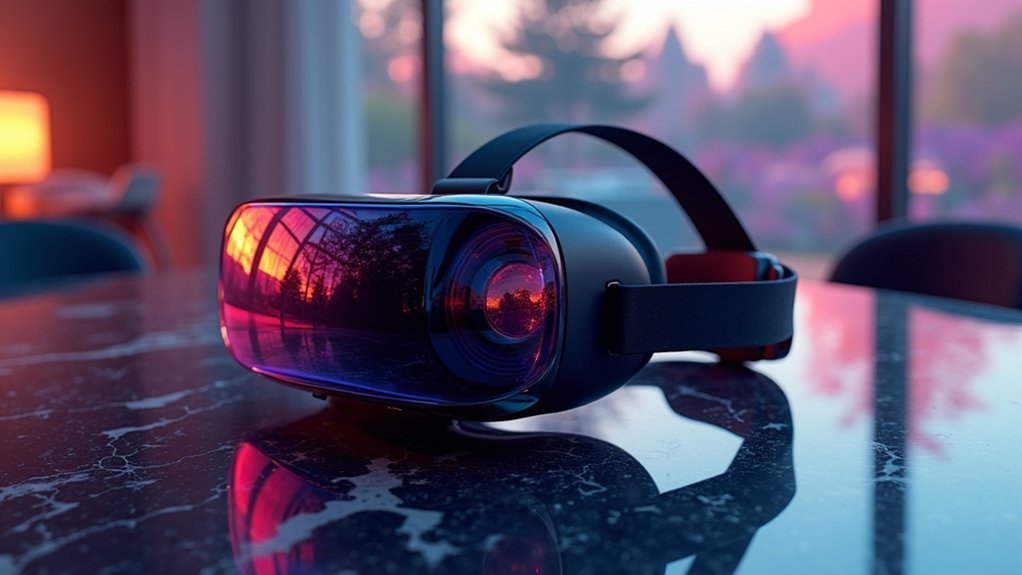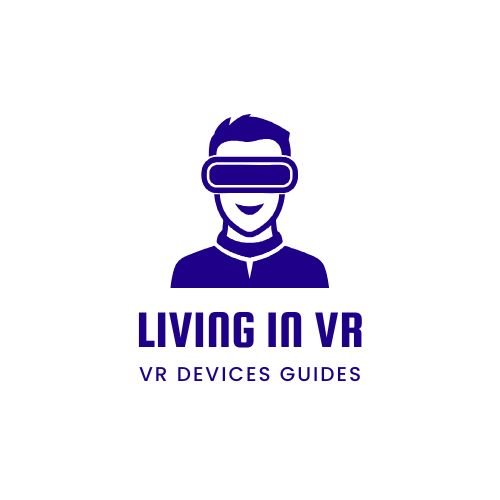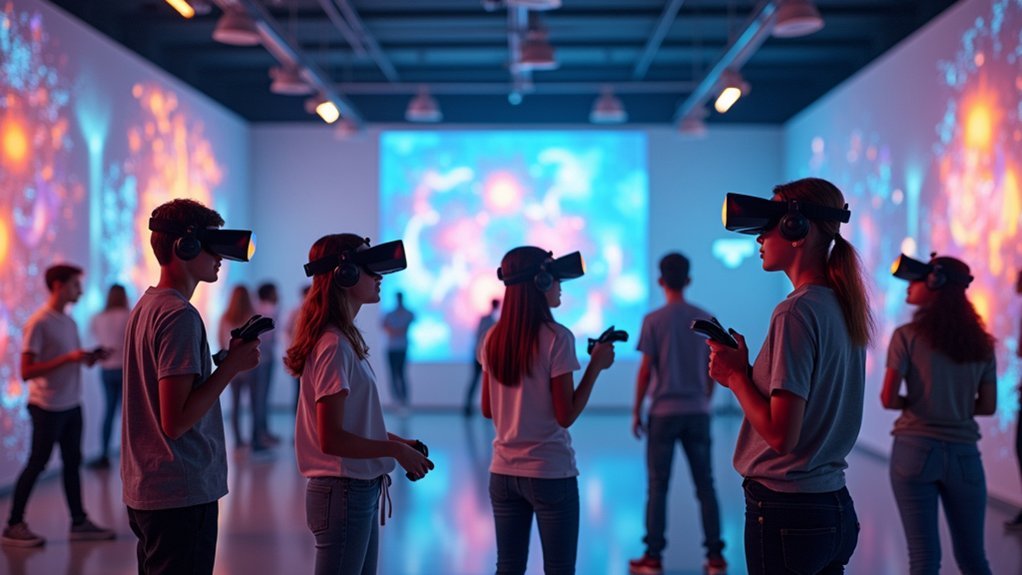To enable HDR for stunning visual experiences, you’ll need an HDR-capable graphics card like NVIDIA RTX or AMD RX series, plus a VR headset with at least 1080p per eye resolution and 90Hz refresh rate. Connect using DisplayPort 1.4 or HDMI 2.1, then enable “Use HDR” in Windows Settings > System > Display and activate “Auto HDR” for enhanced brightness. Calibrate using Windows HDR Calibration app for ideal color accuracy. These foundational steps release dramatically improved visual fidelity that transforms your virtual environments.
Hardware Requirements for HDR-Ready VR Headsets

While HDR technology promises breathtaking visual experiences in VR, you’ll need specific hardware components to access its full potential. Your HDR-ready VR headset requires minimum 1080p resolution per eye, though higher resolutions deliver superior visual fidelity.
HDR VR demands specific hardware—your headset needs 1080p minimum per eye, though higher resolutions unlock truly superior visual experiences.
You’ll want at least 90Hz refresh rate to guarantee smooth immersive gameplay and prevent motion sickness.
Your connection setup demands HDMI 2.0 or DisplayPort 1.4 compatibility for adequate bandwidth transmission. You can’t skip having an HDR-capable graphics card—NVIDIA’s RTX series or AMD’s RX series effectively process HDR visuals.
Many headsets support wide color gamuts like DCI-P3, expanding your color range considerably. These components work together to transform your VR experience, delivering the stunning HDR visuals that make virtual worlds come alive with unprecedented realism.
Configuring HDR Settings in Windows for VR Applications
Once you’ve confirmed your hardware meets HDR requirements, you’ll need to configure Windows settings to enable HDR functionality for your VR applications. Navigate to Settings > System > Display and toggle the “Use HDR” option for your HDR-capable display. Next, access Windows HD Color settings to enable “Auto HDR,” which enhances compatible VR applications by improving brightness levels and color reproduction.
| Setting | Action |
|---|---|
| Windows Update | Confirm version 2004+ installed |
| Display HDR Toggle | Enable “Use HDR” option |
| Auto HDR | Activate in HD Color settings |
| HDR Calibration | Run Windows HDR Calibration app |
| Power Settings | Adjust for HDR performance |
Use the Windows HDR calibration app to fine-tune your display’s colors and brightness levels, guaranteeing peak visual quality for VR content.
Optimizing Display Connections and Cable Selection for VR HDR

After configuring your Windows HDR settings, you’ll need to establish the proper physical connections between your components to access HDR’s full potential.
Your cable selection directly impacts VR HDR performance. Connect your gaming PC monitor using DisplayPort 1.4 for peak HDR capabilities, supporting higher refresh rates at native resolution. If you prefer HDMI, confirm both your graphics card and monitor support HDMI 2.1, using the included cable for best HDR content results.
VR headsets require similar attention—use DisplayPort 1.4 or HDMI 2.1 connections for seamless integration.
Install the latest graphics card drivers to guarantee HDR support compatibility. Always verify your display specifications, as not all monitors labeled HDR-capable deliver effective experiences.
These well-suited connections are essential for revealing stunning visual quality in VR environments.
Calibrating HDR Color Profiles for Enhanced VR Visuals
Proper HDR calibration transforms your VR experience from ordinary to extraordinary, but it requires methodical setup to achieve ideal results.
Begin by powering on your HDR-capable display for at least 15 minutes before calibrating HDR color profiles. Navigate to Display Settings and access the HDR Settings submenu to initiate calibration.
Launch the Windows HDR Calibration app for precise adjustments tailored to your specific display characteristics. Follow the on-screen instructions carefully to create customized profiles that deliver excellent color accuracy.
Use the brightness balance slider to fine-tune brightness levels for both HDR and SDR content.
Recalibrate regularly after significant lighting changes or extended display usage to maintain peak performance when viewing HDR content in your VR environment.
Managing Power Consumption and Battery Life With VR HDR Features

While achieving perfect HDR calibration enhances your VR visuals, running HDR features can dramatically impact your device’s power consumption and battery performance.
Your gaming PC will automatically disable HDR when running on battery to preserve power, affecting visual quality during HDR content playback. You can modify power settings to allow HDR while on battery, though this considerably reduces battery life due to increased brightness level demands.
Gaming PCs automatically disable HDR on battery power to preserve energy, significantly impacting visual quality during content playback.
When you plug in your device, HDR reactivates automatically on your HDR-capable monitor.
To manage HDR effectively, balance visual excellence with power efficiency by toggling HDR settings based on your current power source and content type during VR sessions.
Frequently Asked Questions
Should You Leave HDR on All the Time?
You shouldn’t leave HDR on all the time because it’ll wash out SDR content, create inaccurate brightness levels, increase power consumption, and degrade your viewing experience on non-HDR material.
Is HDR Better or Worse for Eyes?
HDR can be better for your eyes when properly calibrated, reducing strain through improved contrast and readability. However, you’ll experience discomfort if brightness levels are too high or you’re light-sensitive.
How to Get HDR to Look Good?
You’ll need to calibrate your HDR display properly using Windows HDR Calibration app, adjust brightness balance settings, guarantee you’re using DisplayPort 1.4 or HDMI 2.1, and test with actual HDR content.
What Does “Enable Hdr” Mean?
“Enable HDR” means you’re turning on your display’s ability to show a wider range of colors and brightness levels, creating more vibrant, realistic images with better contrast than standard display modes.





Leave a Reply